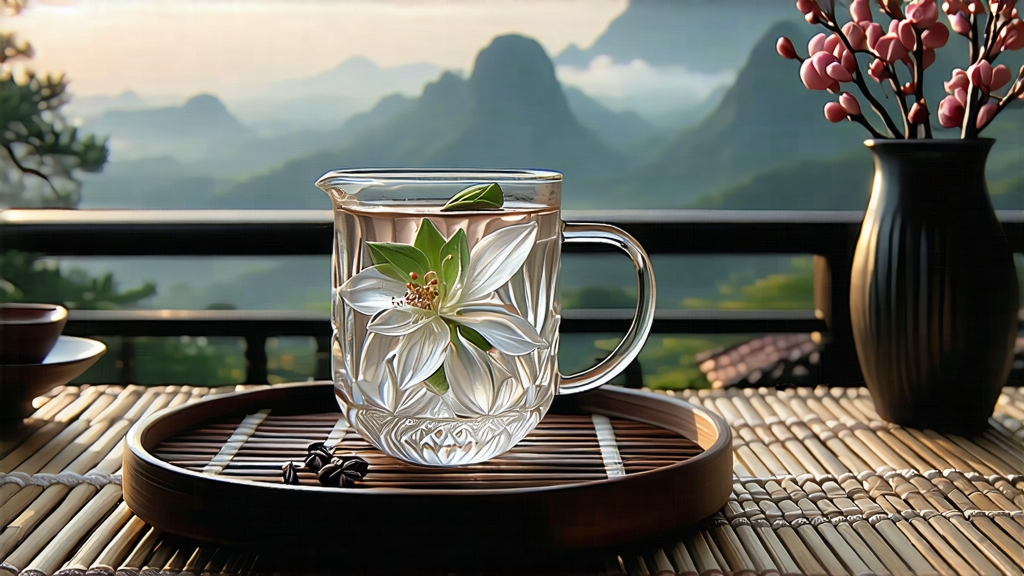
Bai Hao Yin Zhen—“Silver Needle, White Down”—is the quiet aristocrat of Chinese tea. While pu-erh courts collectors with age and dragon-well dazzles with theater in a glass, Silver Needle whispers. Its story is told in the soft rustle of unopened buds, in the scent of fresh rain on mountain bamboo, in a liquor so pale it catches light like liquid moonlight. To meet this tea is to step into a chamber of Chinese history where emperors once sealed it in wax, where Song-dynety poets praised its “snow in a spring cup,” and where modern farmers still wake at 4 a.m. to pluck before the mountain mist burns away.
Origin and Legend
The documented birth of Silver Needle is usually fixed to 1796 in Fujian’s coastal county of Fuding, yet folk memory pushes the myth deeper. One tale claims that during the Song era a tea maiden named Yin Zhen (“silver needle”) was so skilled at coaxing fragrance from wild tea trees that the local magistrate presented her buds to the emperor. The imperial taster, struck by the aroma of “morning fog locked in velvet,” named the tea after her. Whether apocryphal or not, the story underlines two constants: the material must be buds only, and the birthplace must be the volcanic soils of northern Fujian—either Fuding or the slightly cooler Zhenghe county. Within the protected geographical indication (PGI) enacted in 2006, true Silver Needle can come only from these two micro-climates where red-yellow laterite, subtropical humidity and maritime clouds slow the growth of the Da Bai (Big White) cultivar, allowing amino acids to accumulate and down to grow thick as frost.
From Bush to Bud: The Cultivar
Da Bai Hao, the “Big White Down,” is a tea shrub that behaves like a camel: it stores nourishment in its thick, broad leaves and dormant buds throughout winter. In early March, when night temperatures still dip to 8 °C, the plant’s apical buds swell into plump spears sheathed in 2–3 mm of silvery trichomes. These hairs—botanically speaking, protective pubescence—are rich in volatile terpenes and catechins that later translate into the tea’s signature “cucumber-melon” note. A single kilogram of finished Silver Needle requires roughly 30,000 buds, all picked within a seven-day window when the apical leaf is still unopened, the down is brightest, and the bud length hovers between 2.5 and 3 cm. Experienced pickers use a snap-twist motion to avoid bruising the stem base; any compression triggers premature oxidation that will show up as ruddy streaks after drying.
Craft Without Fire: The Withering Art
If green tea is killed by heat and black tea is coaxed by it, white tea is defined by the absence of both. Once the wicker baskets arrive at the factory, the buds are gently scattered on bamboo trays no thicker than two fingers so that air can kiss every spear. The first phase, outdoor withering, lasts 4–6 h depending on humidity and solar angle. Buds lose about 20 % moisture under the March sun, but the goal is not desiccation; it is to initiate a slow enzymatic conversation. Polyphenol oxidase and peroxidase begin nibbling at catechins, producing faint floral lactones, while proteases break proteins into free amino acids, chiefly theanine, which gives Silver Needle its brothy sweetness.
When the sun climbs overhead, trays are moved indoors to a second withering stage (18–24 h) in a ventilated loft where temperature is kept at 22–26 °C and relative humidity around 65 %. Here the tea master’s only tools are his nose and a small hand-held moisture meter. He waits until the bud feels leather-tough, bends without snapping, and releases a scent reminiscent of fresh soy milk. At this point moisture has fallen to 10–12 %, but the enzyme pool is still alive; the final 3 % will be removed by a 15-minute “baking” at 40 °C using charcoal embers covered with ash. The heat is so gentle that one can lay a palm on the tray—any hotter would seal the bud surface, trapping unwanted